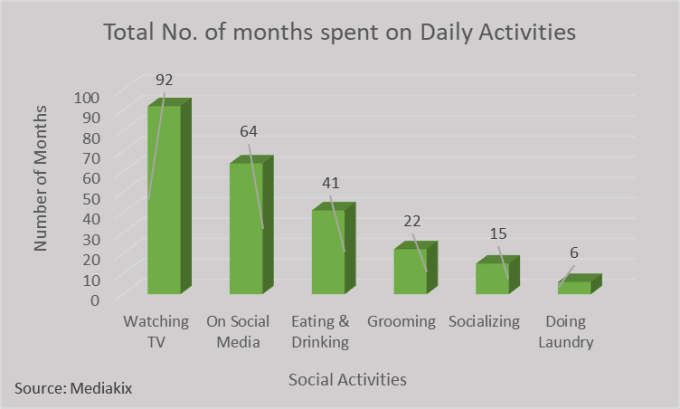The dystopian future showcases our desire to stay connected to technology which eventually disconnects us from the ‘real’ world.
TV shows often attempt to capture the imaginary depictions of the futuristic world. But while many have failed to completely showcase the tech addiction, a few may have ‘just about’ succeeded in capturing the chilling resemblance to our current world.
When Black Mirror‘s third season aired on Netflix last year, its chilling resemblance to our digital lives immediately connected with the audience. The series did not shy away from outlining the disturbing future in a ‘social media‘ driven world and brilliantly magnified our frenzied obsession with technology.
One such story was featured as the first episode of the third season called “Nosedive.” It showed the power of exaggerated ratings and an obsession to be socially accepted in a digitally connected world. In the show, a higher ranking meant greater social acceptance by people and the scores depended on the type of interactions.
It featured a woman’s desperate attempts to attend a friend’s swanky wedding. But the only problem here was that the woman quickly faced a drop in her ratings by the time she makes it to the wedding. “Nosedive” featured a permanent contact lens on each individual that captured the rating alongside people’s heads.
Constantly swiping on phones to give and get real-time ratings to people resembles nothing but a class system that formed the main plot of “Nosedive.”
But if you thought that the ratings were only limited to bonds, loans, businesses, restaurants or made a good script for Black Mirror’s “Nosedive,” then you may be in for a big surprise!
The episode had a stark resemblance to the 2015-launched app Peeple – which was described as “Yelp for humans” and faced a media backlash. The app received little appreciation with The Washington Post dubbing it as “the terrifying Yelp for people.” But in 2016, the app went live as “a reputation application” that allowed its users to “recommend and be recommended by the people” they interacted with in their day-to-day lives on three main levels: “Personal, Professional, and Dating.”
Peeple never really took off but it was surely not the only app that closely aligned with the social rating importance of “Nosedive.”
In the world of ratings, human ratings have been tried and tested before and currently continues to exist as an incidental rating through services that are provided to us.
A more subtle approach towards rating human experiences can be seen through on-demand services like Uber and Lyft. The apps allow for a two-way rating system where both the drivers and the passengers rate one another depending on their individual experiences.
But interestingly (and thankfully), the ratings are not a decisive factor on whether one gets a ride or not.
Other than Uber and Lyft, major social media platforms like Facebook, Snap, and Twitter also thrive on the fact that users should always remain online. Such retention eventually translates into the companies’ revenues since the bigger the number of daily active users, the bigger the valuation of the firm.
Nowadays, apps are desperately trying hard to introduce innovative styles to attract new users while retaining its old ones. A perfect example of such engagement is Facebook’s Instagram which is actively introducing features that closely resemble Snap.
Facebook uses augmented reality (AR) features allowing one to animate him/herself and share the story with the rest of the world or with only your friends. The connection of Instagram account to the Facebook one leads to more number of likes, eventually keeping the audience engaged.
The increasing power of users on such platforms directly correlates with the number of hours that people spend online.
According to a 2017 report by Mediakix, the average daily amount spent on social media platforms like YouTube, Twitter, Facebook, Instagram, or Snapchat ranges from one minute to 45 minutes. These metrics show that the online sphere is so huge that social ratings have become an integral part of our daily lifestyle. Over recent decades, online addictive behavior (whether it’s created through social ranking or through videos and photographs) has become more common and mainstream.

But while many established technocrats want to engage the audience and endorse the use of technology to their clients, at home they have restrictions on such use.
In late 2010, Steve Jobs told The New York Times journalist Nick Bilton that his children had never used the iPad. “We limit how much technology our kids use in the home.” Such examples lead us to Adam Alter’s book Irresistible which realistically captures the rise of addictive technology and how it is successful in keeping us engaged.
In his brilliant book, Alter writes,
Tech isn’t morally good or bad until it’s wielded by the corporations that fashion it for mass consumption.
And in the age of Artificial Intelligence and Mixed Reality, this might as well be the case.
